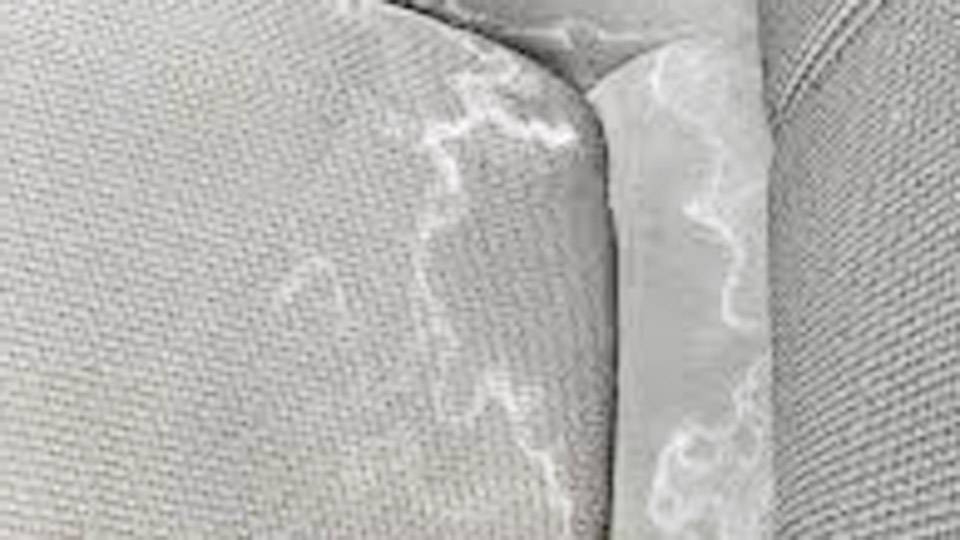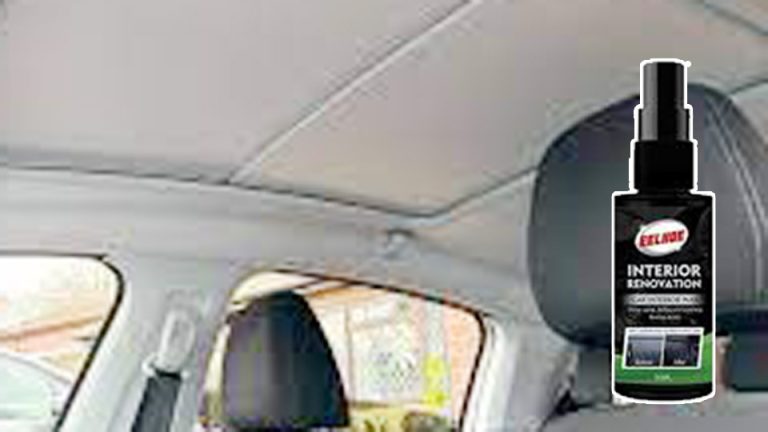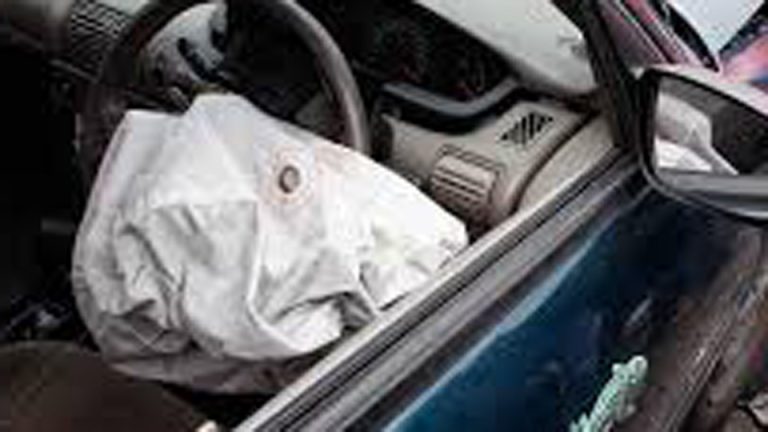Spilled some water in your car and now you’re staring at those annoying water stains on your fabric seats? I’ve been there, and it’s such a bummer when your car’s interior starts looking blotchy. I’ve had my share of spills—coffee, soda, and yes, plain old water—in my old hatchback and my current SUV.
Water stains might seem harmless, but they can make your seats look dirty and worn out if you don’t tackle them right.
I’ve figured out what works and what doesn’t when it comes to cleaning fabric car seats. In this article, I’m going to walk you through how to clean water stains on fabric car seats, sharing tips from my own trial and error. If you’re a busy parent, a road-trip enthusiast, or just someone who loves a clean car, this guide is for you.

Image by fb
Why Do Water Stains Happen on Fabric Car Seats?
Water stains aren’t just about water drying on your seats. They happen because water can carry dirt, minerals, or oils from the fabric’s surface into weird, blotchy patterns. I learned this the hard way when I spilled a bottle of water in my hatchback. The stain wasn’t just water—it picked up dust and grime already in the fabric.
If your seats are already a bit dirty, water can make things worse by spreading that gunk around. Hard water, with its minerals, can also leave white or chalky marks. Understanding this helps you know why cleaning isn’t just about wiping it down. You need to lift the stain and refresh the fabric.
Gather the Right Supplies
Before you start cleaning, you need the right tools. I made the mistake early on of grabbing whatever was in my kitchen, and let’s just say dish soap alone didn’t cut it. Here’s what I keep in my cleaning kit now:
- Upholstery cleaner: A foam or spray made for car fabrics, like Turtle Wax or Chemical Guys.
- Microfiber cloths: Soft and great for wiping without scratching.
- Soft-bristled brush: A toothbrush or detailing brush for scrubbing stains.
- Vacuum with upholstery attachment: To suck up loose dirt first.
- White vinegar: Great for breaking down water stains.
- Baking soda: Helps with odors and tough stains.
- Spray bottle: For mixing and applying solutions.
- Bucket of warm water: For rinsing cloths.
- Clean towels: For drying the seats.
- Optional stain remover: For stubborn marks, like Bissell’s spot cleaner.
Having these ready makes the job easier. You don’t need fancy stuff—just the right tools to avoid damaging your seats.
Vacuum the Seats First
Start by vacuuming your seats. I skipped this once, and all I did was grind dirt deeper into the fabric when I started scrubbing. Use a vacuum with an upholstery or brush attachment to remove loose dirt, crumbs, and dust.
Pay extra attention to seams and crevices—those spots love to hide gunk. My SUV’s seats had crumbs galore from my kids’ snacks, and vacuuming made a huge difference. Go slow to avoid pushing dirt around. This step takes just 5-10 minutes but sets you up for a better clean.
Test Your Cleaning Solution
Always test your cleaner before going all in. I learned this after using a new upholstery cleaner on my hatchback’s seats. It left a weird residue because I didn’t test it first. Pick a hidden spot, like under the seat or along the side, and apply a small amount of your cleaner.
Wait a few minutes to make sure it doesn’t discolor or damage the fabric. Every car’s fabric is different—some are more delicate than others. If the test spot looks good, you’re ready to move on.
Use an Upholstery Cleaner for General Stains
For most water stains, a good upholstery cleaner is your best friend. I like foam cleaners because they’re easy to control. Spray or apply the cleaner to a small section of the seat—don’t soak it. Use a microfiber cloth to rub gently in circles.
I had a water stain on my driver’s seat from a leaky water bottle, and a foam cleaner like Turtle Wax lifted it right out. For deeper stains, use a soft-bristled brush to work the cleaner into the fabric. Don’t scrub too hard—you don’t want to fray the material. Work in small sections, like one seat at a time, to keep things manageable.
Try a Vinegar Solution for Stubborn Water Stains
If the upholstery cleaner doesn’t fully remove the water stain, white vinegar is a game-changer. I discovered this when a hard water stain on my passenger seat wouldn’t budge. Mix one part white vinegar with two parts warm water in a spray bottle. Lightly mist the stained area—don’t drench it. Let it sit for 5-10 minutes to break down the minerals or dirt.
Then, blot with a microfiber cloth. I usually follow up with a damp cloth to rinse off the vinegar smell. This method worked wonders on my SUV’s seats, especially for those chalky white stains from hard water.
Use Baking Soda for Odors and Tough Stains
Sometimes, water stains come with a musty smell, especially if the seats stayed wet for a while. I had this issue in my hatchback after leaving a wet towel on the seat overnight. Sprinkle baking soda over the stained area and let it sit for 15-20 minutes. It absorbs odors and helps lift stains.
Scrub gently with a soft brush and vacuum it up. I was amazed at how fresh my seats smelled after this. For extra stubborn stains, mix a paste of baking soda and water, apply it to the stain, and let it sit for an hour before scrubbing and vacuuming.
Rinse and Blot the Seats
After cleaning, you need to remove any leftover cleaner or vinegar. I made the mistake of skipping this once, and my seats felt sticky for days. Use a clean microfiber cloth dampened with warm water to blot the cleaned areas. Don’t soak the fabric—just make it damp enough to lift residue. Blot, don’t rub, to avoid spreading dirt.
Use a dry towel to soak up excess moisture. I usually press down hard to get as much water out as possible. This step helps prevent new water stains from forming as the seats dry.
Dry the Seats Thoroughly
Drying is super important. Wet seats can develop new stains or even mold if left damp. After blotting, I leave my car doors open for a few hours to air dry. If it’s humid or you’re in a rush, use a fan or a hairdryer on the cool setting to speed things up.
I’ve also parked my car in the sun with the windows cracked to help dry the seats faster. Just make sure the seats are completely dry before sitting on them—I learned this after getting my pants wet from a half-dried seat!
Protect Your Seats After Cleaning
Once your seats are clean and dry, protect them to prevent future stains. I started using a fabric protectant spray after dealing with repeated spills in my SUV. Products like Scotchgard or 303 Fabric Guard create a barrier that repels water and dirt.
Spray lightly and evenly over the seats, following the product’s instructions. Let it dry completely before using the car. I also keep a towel or seat cover handy for quick protection, especially if I’m carrying drinks or kids. This step has saved me from countless headaches.
Clean Regularly to Prevent Stains
Regular cleaning keeps water stains from becoming a big problem. I used to wait until my seats looked bad, but now I give them a quick clean every month or two. Vacuum weekly to remove loose dirt, and spot-clean spills right away.
I keep a small spray bottle of diluted upholstery cleaner in my trunk for quick fixes. It takes less time to maintain clean seats than to deal with set-in stains. I learned this after neglecting my hatchback’s seats for too long.
Avoid Common Cleaning Mistakes
I’ve made plenty of mistakes cleaning fabric seats, so let me save you some trouble. Don’t use too much water—it can soak into the foam under the fabric and cause mold. Avoid harsh household cleaners like bleach—they can fade or damage the fabric.
Don’t scrub too hard; it can fray the material or spread the stain. And never skip drying—wet seats are a recipe for trouble. I once used a kitchen sponge on my seats, and it left tiny scratches in the fabric. Stick to microfiber cloths and soft brushes for the best results.
Comparing Cleaning Methods for Water Stains
Here’s a table to help you choose the best method for cleaning water stains on fabric car seats:
| Method | Best For | Pros | Cons |
|---|---|---|---|
| Upholstery Cleaner | General water stains | Easy to use, safe for most fabrics | May not work on hard water stains |
| Vinegar Solution | Hard water or mineral stains | Cheap, effective on tough stains | Smell takes time to fade |
| Baking Soda | Odors, stubborn stains | Absorbs smells, lifts dirt | Requires vacuuming, can be messy |
| Fabric Protectant Spray | Preventing future stains | Repels water and dirt | Needs reapplication every few months |
| Mild Soap and Water | Light stains in a pinch | Readily available, gentle | Less effective on set-in stains |
Step-by-Step Cleaning Process
Here’s how I clean water stains on my fabric car seats, step by step:
- Vacuum the seats. Use an upholstery attachment to remove loose dirt and debris.
- Test your cleaner. Apply a small amount to a hidden spot and check for damage.
- Apply upholstery cleaner. Spray on a microfiber cloth and rub gently in small sections.
- Use vinegar for tough stains. Mist a vinegar-water mix on the stain, let it sit, and blot.
- Sprinkle baking soda for odors. Let it sit for 15-20 minutes, scrub, and vacuum.
- Rinse with a damp cloth. Blot to remove cleaner residue, then dry with a towel.
- Dry thoroughly. Air dry with open doors or use a fan to speed it up.
- Apply fabric protectant. Spray lightly to prevent future stains.
This process takes about 30-60 minutes, depending on how bad the stains are. It’s straightforward and makes a big difference.
When to Call a Professional
Most water stains are DIY-friendly, but sometimes you need a pro. If the stains are deep, the fabric is delicate, or you’re dealing with mold from prolonged dampness, a professional detailer can help. I took my SUV to a detailer once when a water stain turned musty after a rainy week.
They used a steam cleaner and special products to save the seats. Professional detailing costs $100-$300, depending on the job, but it’s worth it for tough cases or if you want a showroom finish.
Advice for Keeping Fabric Seats Stain-Free
Here’s what I’ve learned to keep fabric seats looking great:
- Act fast on spills. Blot water or other liquids right away to prevent stains.
- Vacuum regularly. Weekly vacuuming keeps dirt from building up.
- Use a fabric protectant. Apply it every few months to repel water and dirt.
- Keep a cleaning kit handy. Store microfiber cloths, cleaner, and a brush in your car.
- Avoid eating or drinking in the car. It’s tough, but it cuts down on spills.
- Check for leaks. A leaky window or sunroof can cause water stains, so fix them ASAP.
These habits have kept my SUV’s seats looking good, even with kids and pets.
Conclusion
Water stains on fabric car seats can be a real eyesore, but they don’t have to stay that way. I’ve spilled my share of drinks and dealt with the aftermath, so I know how satisfying it is to see those seats clean again. With the right tools—like a good upholstery cleaner, vinegar, and some elbow grease—you can tackle those stains and keep your car’s interior looking sharp.
Regular cleaning and a little protection go a long way toward preventing future messes. So grab your supplies, roll up your sleeves, and give your seats the refresh they deserve. There’s nothing like sliding into a clean, comfy car for your next drive. Here’s to spotless seats and happy road trips!
FAQs
Can I use regular household cleaners on fabric car seats?
Avoid harsh cleaners like bleach—they can fade or damage the fabric. Stick to upholstery cleaners or mild solutions like vinegar and water.
How do I get rid of hard water stains on my seats?
Mix one part white vinegar with two parts water, mist the stain, and let it sit for 5-10 minutes. Blot with a microfiber cloth and rinse with clean water.
Will cleaning water stains cause mold in my seats?
If you don personally’t dry the seats thoroughly, mold can form. Blot excess moisture and air dry with open doors or a fan.
How often should I clean my fabric car seats?
Vacuum weekly and spot-clean spills right away. Do a full clean every 2-3 months to keep stains and dirt at bay.
Can baking soda help with water stains?
Yes, baking soda lifts stains and removes musty odors. Sprinkle it on, let it sit, scrub gently, and vacuum it up.
What’s the best way to dry fabric seats after cleaning?
Blot with a dry towel, then air dry with open doors. Use a fan or park in the sun with windows cracked to speed it up.
Should I use a fabric protectant on my seats?
Absolutely. A protectant like Scotchgard repels water and dirt, making future stains easier to clean. Apply it every few months.




